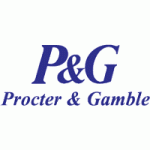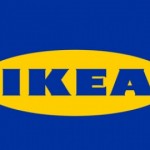Strategy

Due to the rapid growth in coffee sector in United Kingdom which was triggered by a trend in social culture and a growth in household expenditure boosted the growth of Caffe Nero which has opened its branches in over 135 cities and 300 branches all over the world. Caffe Nero, based on Italian brand has been successful on capturing the larger share of market slice both in UK and other European countries despite of a intensified competition. However, it has the risk of going head to head with other coffee giants which is a threat to the company. Strengths of the company which helped to capture a huge share of the market from its competitors which resulted in: Profits nearly doubled by the year end (2008) About 8% growth on sales on certain months on consistent basis Market share nearly tripled over 2 years Environmental analysis for Caffe Nero Marketing oriented firm places the customer and satisfaction of the customers’ needs and wants, at the centre of all corporate thinking. He further mentions that a marketing oriented firm identifies the needs and wants of the customer and produce the goods to satisfy them rather than producing first and offering it to customers later. Although the needs and wants of the customers are clear and understandable, it is not always possible to achieve the desired results as there are other factors which affect the decision made by the company and they are known as environmental factors which are micro and macro environmental considerations. Micro-environmental factors Micro-environment is the forces close to the company that affect its ability to serve its customers-the company, market channel firms, customer markets, competitors and publics. Here are the actors in the micro-environment: The company In this part, the company top management should set the company’s mission…

Dell Inc., one of the world’s largest computer manufacturers in the world, has developed its business in a unique way, by selling equipment directly to customers around the globe. The company was founded in 1984, and has grown from its original base inTexas,USA, into a key international player in the computer industry. Dell Computer Corporation has been extremely successful generating a 13 billion empire only within 13 years of operation in computers market. “Direct Business Model” has enabled the company to be that successful within short period of time. This strategy, as implemented by the founder of Dell Company Michael Dell, let the company to configure computers and sell them directly to customers or final users at incredibly low prices. This was due to eliminating the mark-ups by intermediaries and the risks of carrying slow-moving, large inventories in the warehouses. Direct model turned out to be a success factor for the company as it not only helped to produce and offer computers and services in lower prices, but also enabled the company to interact with customers and satisfy their needs and wants through producing customer-build computers for them. Most importantly Dell proposed the idea of “Virtual Integration” that gave a competitive edge and comparative advantage for the company over its competitors. Financial analysis International markets are now extremely competitive due to the liberalization of the world trade and investment environment in new technology and IT systems. Strategy is often regarded with identifying and taking action that lowers the costs and differentiate Dell’s product offering through superior design, quality, service, and functionality. Dell has been achieving consistent solid annual growth both on sales and net profit due to its market dominance, demand and product innovation. Sales of external storage systems increased 73 percent and continue on an annual run rate of…

To reach different markets or promote products or services to different locations or different people companies use a method called market segmentation. As Cumming (1994) explains, “Market segmentation describes the division of a market into homogenous groups which will respond differently to promotions, communications, advertising and other marketing mix variable.” Therefore, market segmentation is very important for most of all companies around the world. If a company cannot reach the market or area they will success; or the product or service they provide too expensive so the market they are in cannot afford, surely that company cannot expect to prospers but even fails as a company. Market segmentation Market segmentation is to divide the market into smaller segments. The main reason behind the market segmentation is to make easier to address the needs of smaller groups of customers, particularly if they have many characteristics in common (Breen, 2003). However, there are thing marketer needs to consider to see if a market must be segmented. The market in question must be large enough to segmented. Differences must exist between members of the market and these differences must be measurable through traditional collection methods (McElligiot, 2003). Lancaster et al (2002) argues that there is no “golden rule” when it comes to segmenting consumer markets. The marketing firm might have to investigate using different segmentation variables in order to identify the overall structure of market. Often it may be necessary to use a combination of segmentation variables to define the precise market segment. There are four variables commonly used for segmenting consumer markets: Geographic segmentation Demographic segmentation Psychographic segmentation Behavioural segmentation The first two are geographic and demographic segmentations are physical attribute classification, which refers to the dividing of a market into groups based characteristics, such as location, population, country of origin,…

As globalisation of world rapidly changes, today’s global managers, whose company operates in many parts of world, face many challenges in securing their business interests in other countries. When a business decides to enter the foreign market there are a several factors that a company should take into consideration before deciding to expand their product or service into foreign market. Among these factors are the cultural differences the company faces. Cultural differences exist between different countries and these differences must be known and evaluated by the marketing firm. According to Lancaster et al (2002) a number of factors contribute a country’s overall culture including religion, education and aesthetic appreciation. In last twenty years, learning cultural differences among nations and need for greater cross cultural awareness have been seen to be a very important factor in improving and facilitating marketing activities of a company outside their country of origin as different cultures has different ways of doing business, different cultural assumptions, values and attitudes. Therefore, culture is important and has to be appreciated by the managers running the company. It simply can make or break relationship and even may cost the business millions of dollars. Moreover, adaptation to the environmental differences from one market to another is seen as the key to successful international marketing. It is vital for international marketer being able to anticipate the uncontrollable factors of both the foreign and domestic market that have great influence on a marketing mix, so he or she can adjust the marketing mix to minimize the effects. After all, due to globalisation of markets and products, today increasing numbers of international marketing staff have to deal with ethical issues in cross cultural global economy. As a result, it is claimed by many international marketing researchers that the concept of “self reference criteria”…

Procter and Gamble was founded in 1837 by William Procter a British citizen who emigrated to theUnited States, and James Gamble a U.S based Irish soap maker and industrialist. The company first sold candles. P& G as it is also called is a fortune 500 multinational corporation headquartered in Down town Cincinnati,Ohio, that manufactured a wide range of consumer goods. As at mid 2010, P& G is the 6th most profitable corporation in the world and the 5th largest corporation in the United States by market capitalisation. It spends more on US advertising than any other company. Total Revenue USD 79.03 Billion (2009) Operating Income USD 16.13 Billions (2009) Total Assets USD134.83 Billions (2009) Total Equity USD 63.099 Billions (2009) Employees 140,000(2009) President & CEO Bob McDonald As at July 1 2007, the company operation are categorised into three “Global Business Unit” with each Global Business Unit divided into “Business Segments” according the company‘s March 2009 earning release. Manufacturing operation are based in the following regions: United States Europe Canada China(31 wholly owned factories) and other parts of Asia Mexico Africa Latin America Australia 22 of P & G’s brands have more than a billion dollars in net annual sales and another 18 have between $500million and $1 billion. Motto “Touching lives, improving Life” 1. Beauty Care Beauty segment Grooming segment 2. Household Care Baby care and family care segment Fabric care and home care segment 3. Health and wellbeing Health care segment Snacks, Coffee and Pet care segment [ Wikipedia free encyclopedai 2010) APPLICATION OF STRATEGY OF INNOVATION AT PROCTER AND GAMBLE Procter and Gamble have continually used the strategy of innovation to lead the consumer goods industry. The constantly changing market place has forced the strategist at Procter and Gamble to focus on innovation as a way of maintaining their position in the…

As the biggest social networking site (SNS) Facebook pursues the mission of giving people the power to share and make the world more connected. Founded in 2004, Facebook has more than 843 million daily active users and employs more than 3000 people, who maintain website’s operations in more than 70 languages (Fact Sheet, 2012, online). Today Facebook is the biggest SNS in the world; nevertheless, it is faced with a range of serious business challenges that need to be dealt with timely and effectively in order to ensure the long-term growth of the business. Specifically, the emergence of recently launched Google+ as the main competitor, presents significant business challenges for Facebook taking into account high level of a wide range of tangible and intangible resources possessed by Google. Moreover, growing personal data security concerns fuelled by media represents another significant challenge for Facebook that threatens the company business perspectives unless dealt with effectively and efficiently. Also, the lifecycle of services introduced by SNS have greatly diminished increasing the importance of innovativeness and creativeness for Facebook. Furthermore, the world’s biggest SNS is faced with growing numbers of local competitors that possess substantial competitive advantage over the Facebook. Namely, local SNS associated with specific countries develop website’s design and various features taking into account cultural and other differences associated with specific regions whereas Facebook only able to offer standard design and features globally, and thus may find it difficult to attract the representatives of various cultural backgrounds. References Fact Sheet (2012) Facebook, Availabel at: http://newsroom.fb.com/content/default.aspx?NewsAreaId=22 Accessed April 5, 2012

Strategy formulation has been acknowledged as one of the most crucial factors of ensuring the long-term growth of the business. However, the manner in which strategy is formulated, and most importantly, the nature of the strategy chosen for the company determines its future position in the marketplace (Grant, 2005). This article presents is a critical analysis of the article “Strategy as Revolution” published by Gary Hamel (1996) in Harvard Business Review. The article clarifies the position of the article within the wider debate about the processes of strategy and highlights the main strengths and weaknesses associated with the article. The Placement “Strategy as Revolution” within Processes of Strategy Debates The traditional strategic planning process as informed by NetMBA (2011, online) occurs from top to down and consists of mission, objectives, situation analysis, strategy formulation, implementation and control. However, Hamel’s (1996) “Strategy as Revolution” challenges this viewpoint by stating that strategies have to reflect the viewpoints of employees at all levels in general, and employees from tactical and operational levels in particular. Azar and Brock (2010) specify change to be an integral part of effective strategic management. In other words, authors argue that effective strategic management has to introduce necessary changes into various aspects of the business that would contribute to the firm’s competitive edge. This viewpoint is further developed by Floyd et al (2011), who stress the importance of new ideas in terms of introducing necessary changes into the current business strategy. “Strategy as Revolution”, on the other hand, confirms the both viewpoints formulated above, at the same time when specifying that changes to the business practices need to be dramatic, and the new ideas have to be derived mainly from employees other than those holding formal leadership positions. The importance of strategic thinking for managers is stressed by Jarzabkowski…

Spanish Information Technology company ITEC is hugely successful in its local market partially due to its innovative business model – selling the franchises of its ‘Portal de tu Ciudad’ portal that provides information about various aspects of different cities within Spain. Franchisers are offered to sell advertising spaces through franchising a website through the portal that focuses on a specific city for the amount of investment of less than 15,000 Euros. In return they are offered high returns through an expanding business, and training and professional help related to the various aspects of the business. Currently, strategic level management is exploring its opportunities of entering UK market as a part of a global expansion plan. This article is intended to ITEC strategic level management and advices the company regarding its expansion plans into UK. The article is based on ITEC company and UK information technology market analyses that have been conducted through employing a range of relevant strategic tools. Moreover, the article recommends a strategy ITEC can apply in relation to its UK market entry plans. It needs to be stressed that along with franchising opportunities the company also offers a range of other products and services such as websites for companies and individuals, optimisation services on Google and other major search engines, reports and researches for companies and industries and others. However, it is mainly the franchising opportunities on the basis of ‘Portal de tu Ciudad’ portal the company is relying on in terms of ensuring success in UK market. Accordingly, the report mainly focuses on franchising offer of the company n terms of detailed analysis. ITEC Company Analysis ITEC needs to be analysed in detail in order to advice the company regarding its expansion plans in a most appropriate manner. SWOT analysis is found to be the…

Founded in 1943 by Ingvar Kamprad, IKEA generated the sales of 23.1 billion Euros in 2010 through its operations in more than 38 different countries with 27 distribution centres. The IKEA Group has 280 stores in 26 countries and the remaining of the stores are run by franchisees (Berger, 2011). The business concept of IKEA involves selling high volume of mostly furniture products in low prices. Moreover, “with an aim of lowering prices across its entire offering by an average of 2% to 3% each year, its signature feature is the flat packed product that customers assemble at home, thus reducing transportation costs” (Profile:IKEA, 2011, online) The vision of the company reflects this strategy in an effective manner. “The IKEA vision is to create a better everyday life for many people. We make this possible by offering a wide range of well-designed, functional home furnishing products at prices so low that as many people as possible will be able to afford them” (Inter Ikea Systems B.V, 2011, online). As one of the leading retailers in a global scale IKEA is engaged in systematic environmental monitoring and analysis which serves to be an effective source of information for decision-making. Internal benchmarking is one of the main methods of environmental monitoring and analysis engaged in by IKEA. Benchmarking is “method of improving business performance by learning from other companies how to do things better in order to be the ‘best in the class’”(Janakiraman & Gopal, 2007, p.181). The Internal benchmarking practice engaged in by IKEA involves comparing different divisions and subsidiaries of the company and thus establishing the best practice and aspiring to it for the remaining divisions and subsidiaries of the company. Moreover, IKEA is engaged in extensive market research both in global and local levels that is conducted by marketers…
The third largest supermarket in UK, J Sainsbury plc (Sainsbury’s) has been founded in 1869, and currently has 890 stores that consist of 547 supermarkets and 343 convenience stores. The company has 150,000 employees and serves more than 19 million customers a week (Company Overview, 2011, online). Sainsbury’s operates mainly in three segments (J Sainsbury’s plc, 2011, online): supermarket and convenience retailing; Sainsbury’s Bank joint venture financial services; Property investment through British Land joint venture and Land Securities joint venture. Sainsbury’s has a range of stakeholders to deal with. A stakeholder can be defined as “someone who has invested money into something, or has some important connection with it” (Chorley et al, 2008, p.2). According to Kozami (2002) stakeholders can be divided into two categories: internal and external. An internal stakeholder for the company is someone who works for the company and therefore is interested in various aspects of the business. External stakeholder, on the other hand, is someone who is interested in the performance and other aspects of the business, even though the individual does not work for the company. Sainsbury’s internal stakeholders include shareholders of the company, managers at all levels and other employees of the company. External stakeholders of Sainsbury’s, on the other hand, include customers of the company, its numerous suppliers, and the local communities, as well as governments Sainsbury’s operates in. At has also to be mentioned that Sainsbury’s internal stakeholders can be external stakeholder of the company at the same time. For example, Sainsbury’s employees who also happen to be local residents are the type of individual who are internal and external stakeholders at the same time. Effectiveness of Sainsbury’s Communication Strategy Sainsbury’s communication strategy comprises most of the elements of popular communication strategy that include advertisement, letters, newsletters, oral communication, company magazine, formal…
